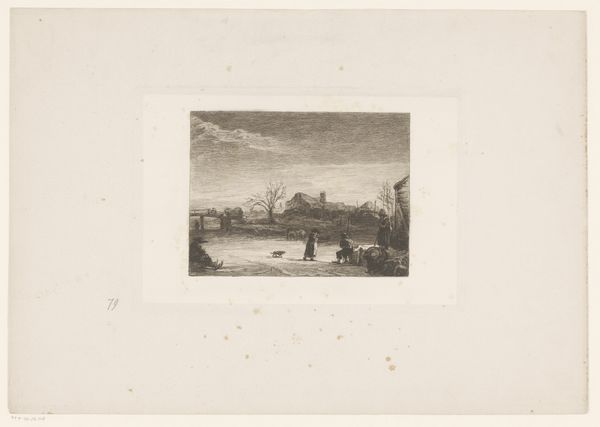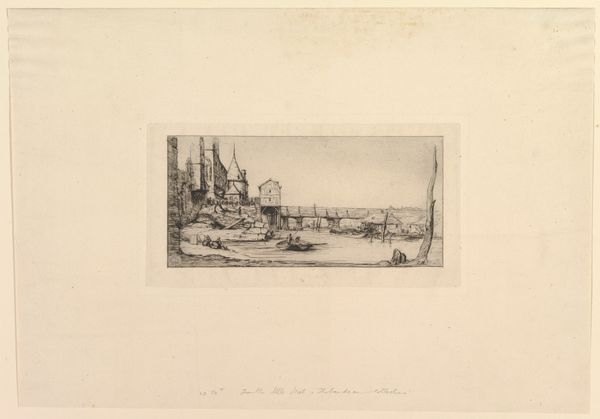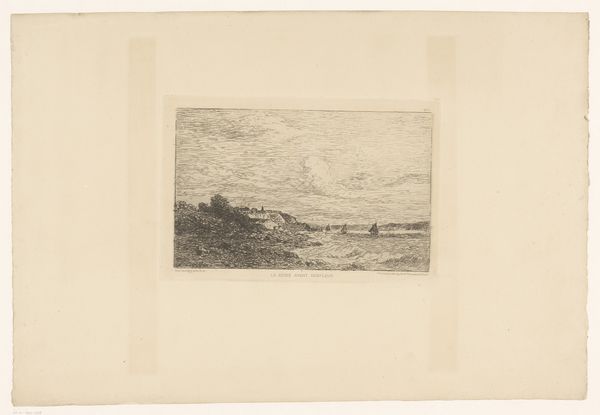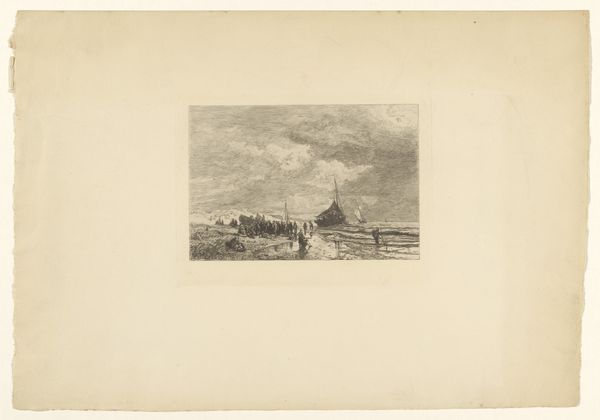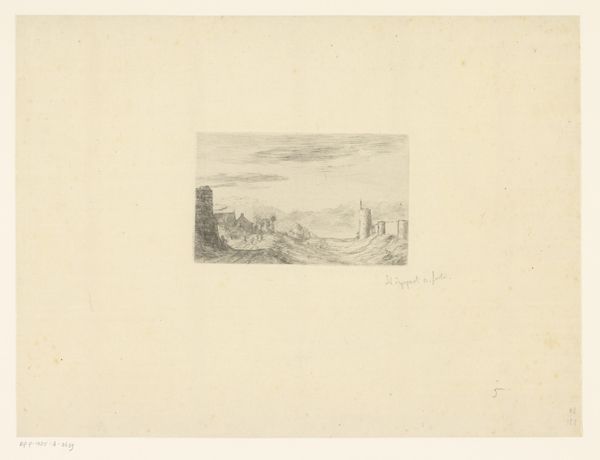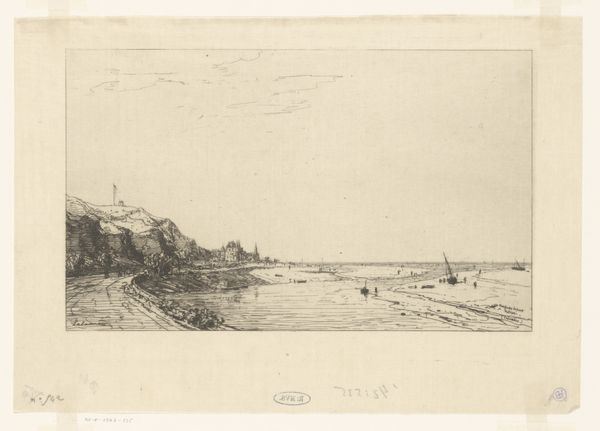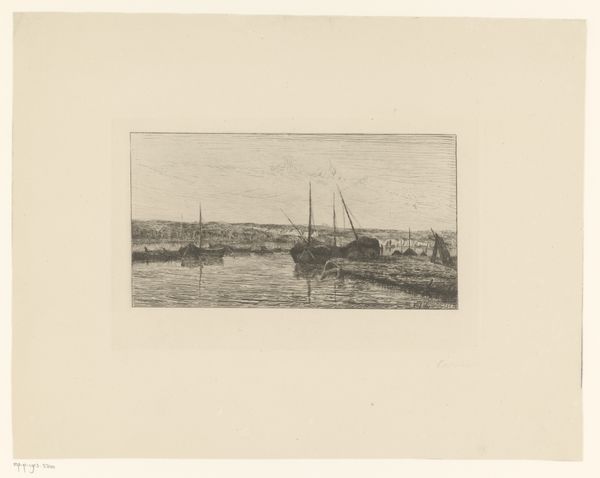
drawing, print, etching
#
drawing
# print
#
etching
#
old engraving style
#
landscape
#
realism
Dimensions: height 159 mm, width 238 mm
Copyright: Rijks Museum: Open Domain
Editor: So, this is *Gezicht op Villers*, an etching and print by Maxime Lalanne from 1869, housed in the Rijksmuseum. The subdued tonality evokes a sense of quietude. How do you interpret this work? Curator: The scene seems tranquil, yet I wonder about the social dynamics at play. Villers, in 1869, would have been experiencing the rise of tourism, with its associated class tensions and impacts on the local environment. Does the artist offer a critique, perhaps subtly depicting the alienation inherent in these changes? Consider how the composition frames the coastline, almost as a stage. Editor: I see what you mean! The stark contrast between the built environment on the left and the vast ocean on the right is pretty stark. Are there other details that support a reading related to class or social tension? Curator: Consider the figures. They are small and indistinct, their activities seemingly detached. This could be read as commentary on the isolation felt even in a crowd, perhaps exacerbated by the social divisions of the time. The deliberate artistic choices – the printmaking technique and its widespread distribution possibilities, the objective yet slightly melancholic perspective – invite critical reflection. Editor: That's fascinating. I hadn't considered how the printmaking itself contributes to a message about democratization and access. Curator: Exactly! It democratizes the image, but to what end? Does it celebrate the scene, or subtly question it? Editor: This conversation has made me consider how an image that appears merely representational on the surface can be laden with social and political commentary. Thanks. Curator: Indeed, and it also shows the impact that humans and their socio-political context has on nature.
Comments
No comments
Be the first to comment and join the conversation on the ultimate creative platform.

